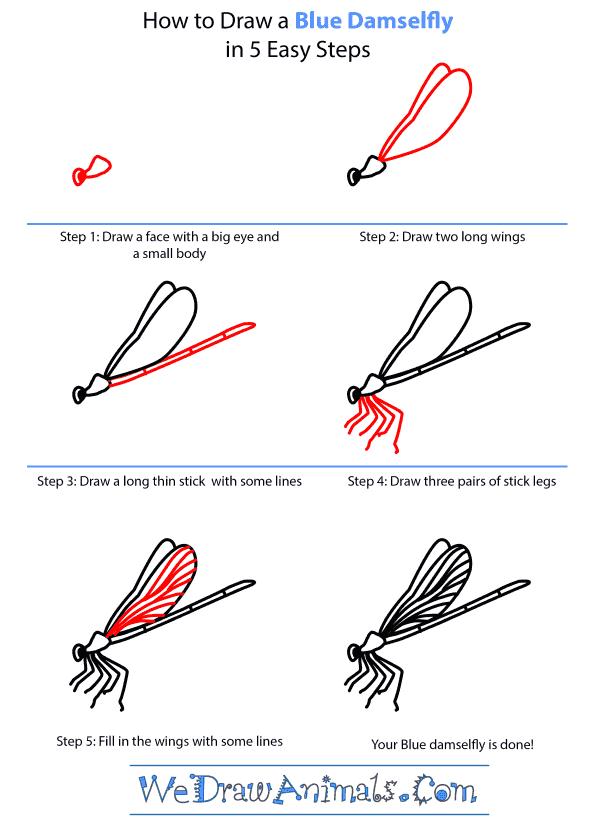In this quick tutorial you'll learn how to draw a Blue Damselfly in 5 easy steps - great for kids and novice artists.
The images above represent how your finished drawing is going to look and the steps involved.
Below are the individual steps - you can click on each one for a High Resolution printable PDF version.
At the bottom you can read some interesting facts about the Blue Damselfly.
Make sure you also check out any of the hundreds of drawing tutorials grouped by category.
How to Draw a Blue Damselfly - Step-by-Step Tutorial
Step 1: First, draw a face with a big eye and a small body.
Step 2: Draw two long wings extending out of the back
Step 3: Draw a long, horizontal stick beneath the wings that will serve as the rest of the body. Segment it off with a few lines.
Step 4: On the front of the body, draw three pairs of thin, stick-like legs.
Step 5: Fill in the details of the wings with some lines.
Interesting Facts about the Blue Damselfly
Blue Damselflies are one of the most common species in Great Britain. While they are commonly confused with other blue damselfly species, the variations in the pattern markings make them distinguishable. They are predatory insects in the adult and larvae stage. They appear in May through September. Adults only live for twelve days (on average) so mating must occur quickly. Sometimes, they can remain larvae for up to three years, at which time they feed on water creatures.
Did you know?
- Eggs are laid on tissue plants in and out of the water
- Have been known as “Horse Stingers”
- Also known as “Devil’s Darning Needle”
- They were once believed to sting their prey, but they actually do not have the ability too
- It is one of two damselflies that are also found in Europe and North America
Lesson Plan Idea – Create a math lesson – research how many eggs a female has on average. (300 for example) if each egg only lived for twelve days, and laid 300 eggs each of their own. How many damselflies would be born within a year?Expand this to say – only 147 made it to adulthood. The rest stayed larvae.






